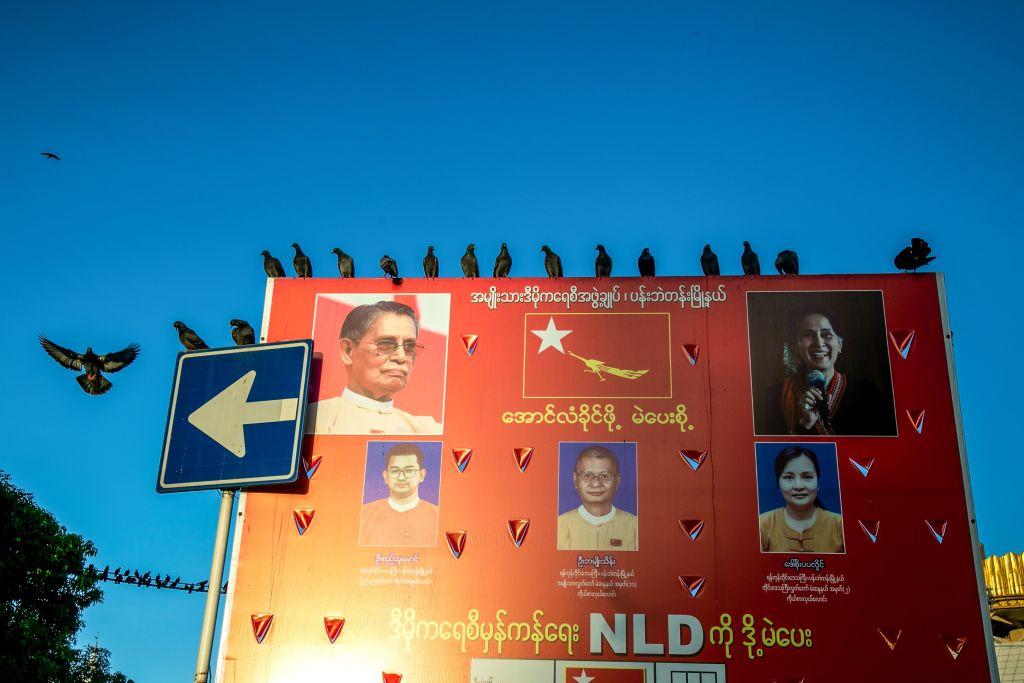
The people of Myanmar will go to the polls on Sunday to elect a new government. Before the Covid-19 pandemic, it was a near certainty that the current administration, led by State Counsellor Aung San Suu Kyi, would be returned. Indeed, and despite the ravages of Covid-19 on Myanmar, a landslide win for the National League for Democracy (NLD) remains the likely result.
Barely three months ago, Myanmar had seemed to have escaped the pandemic relatively unscathed. In August, however, a ‘second wave’ began, and since then the number of infected people has soared to nearly 60,000, while the number of deaths has climbed to more than a thousand. The economic cost of Covid-19 has been similarly severe. Predicted pre-Covid-19 to grow at nearly 7% in 2020 (the second-fastest-growing economy in Southeast Asia, just behind Vietnam), Myanmar’s GDP is now likely to rise by little more than zero. Small wonder that it’s not substantially negative (as in most other countries in the region), but the growth setback will bring about much suffering in a country where few people have much in the way of surplus resources to fall back on.
If the NLD government is returned on 8 November, its economic objectives will be two-pronged. Most immediately, relief and recovery policies will continue, at great but still bearable fiscal cost. But within a short period, barring other exogenous calamities, policies focused on longer-term reforms will reassert their priority. These policies will be a continuation of a trajectory that has seen around 100 major economic reforms enacted since 2016, and will aim to fundamentally transform Myanmar’s political economy.
First on the agenda will be measures aimed at macro-financial stability. Myanmar’s macroeconomy was long destabilised by an excessive state apparatus dominated by the military, but since 2016 the country’s macroeconomic indicators have been just about all headed in the right direction. Especially noteworthy was the budget deficit, which more than halved across the current government’s five-year term. The currency stabilised and foreign direct investment was steady (despite Myanmar’s well-publicised and ongoing human rights troubles), while the broad modernisation of everyday life for many proceeded apace. However, with Covid-19 much on the fiscal front has changed. Good options are available to meet dramatically higher government spending, but implementing them require adept hands on the macro-financial tiller.
Myanmar’s private banking sector has traditionally been as fragile as its public finances. The location of periodic crises and collapse, Myanmar for much of the past 50 years has been largely without the institutions to create and allocate the capital that its farmers, entrepreneurs and ordinary people need. On this front, however, Myanmar’s leaders can afford some optimism. Stimulated rather than repressed by the Covid-19 pandemic, Myanmar’s fast-growing mobile financial service providers have been developing a digital ecosystem that has the potential of replicating (in form if not size) the transformative impact of China’s fintech disrupters.
Around half of Myanmar’s people rely on agriculture for their livelihoods, but it’s a sector that has long been neglected by governments. A second term of the current administration will see a set of initiatives aimed at improving the lot of Myanmar’s farmers, cultivators and rural workers broadly. Wholesale reform of Myanmar’s state-owned agricultural bank is underway, which includes dramatically expanding its outreach via digital channels and link-ups with microfinance institutions. Also in the pipeline is increased investment in agricultural infrastructure, especially rural roads, irrigation and sustainable water management. Access to electricity has been a particular problem in Myanmar, but a growing number of people are now connected to the national grid (although it’s still not completely reliable) and substantial investments are being made in solar, microgrids and other renewable energy systems.
Myanmar’s garment and textile export sector has been a strong contributor to economic growth in recent years (and a vast employer of rural women in particular), but it has been hit hard by Covid-19. Disruptions to international markets and supply chains have placed the industry in some jeopardy, leading the government to work on facilitating its return to health through improvements in Myanmar’s notoriously inefficient transportation infrastructure, measures aimed at alleviating the burdens of excessive red tape on businesses, and substantial tax relief on existing and new enterprises. That work will surely continue, whatever the colour of the next administration. Myanmar’s tourism sector has been even more affected by the pandemic, and a post-election plan to get visitors back will target tourists interested in the country not so much as a one-off bucket-list destination, but as a place for recurring travel for ecotourism, outdoor and adventure sports, and cultural heritage.
One of the most important questions facing Myanmar’s new government will be how to manage relations with China. Of course, this question presents itself to all countries in Southeast Asia, but in Myanmar it’s a matter that is close to existential. China is Myanmar’s largest investor and trading partner, and Beijing’s Belt and Road Initiative ambitions in Myanmar, and attendant financing, will continue to require both close scrutiny and hard-headed realism. These qualities have been conspicuously present in Myanmar’s negotiating toolkit so far. One product was the dramatic reconception of the Kyaukphyu deep-sea port as an asset for Myanmar, rather than an entrapping liability. Vigilance on this front (and others) will be the price of Myanmar’s monetary, fiscal and broader sovereignty.